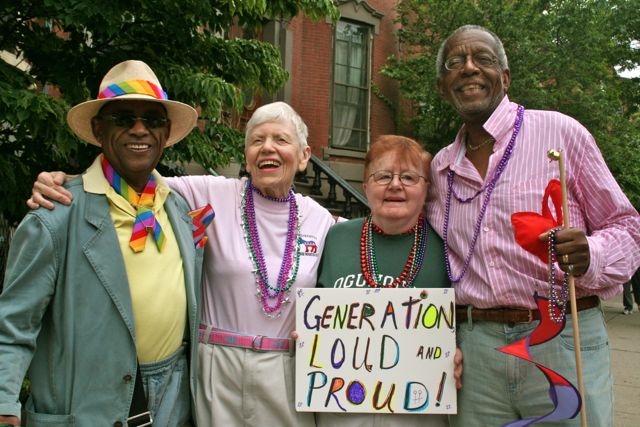— Giving Voice to Those Unable to Speak

Choosing a healthcare proxy could be one of your most important decisions. As your medical decision-maker, they’ll be your voice if you become too sick or injured to speak for yourself. They tell the doctor whether to continue lifesaving treatment or whether to stop treatment. They know which family members you want visiting you and which you don’t. They know what you want because they’re someone you trust.
- A health proxy holds the power of attorney to make health care decisions for you when you can’t because of illness or injury.
- Choosing a health proxy is part of end-of-life paperwork called your advance directive.
- The paperwork is simple but choosing the right person can be tricky.
- You’ll want to pick someone you trust who’s up to the task.
- People who complete health proxy and living will paperwork are three times more likely to have their end-of-life wishes followed.
- Learn how to choose a proxy, discuss it with them, and make it legal.
Surprisingly, however, the best proxy may not be your partner or your adult child. Choosing the right person can be more complicated.
A health proxy is your voice
If you’re whisked to the hospital after a car accident, unconscious and traumatically injured, who will speak for you if you can’t talk? A health proxy is your health care agent who voices the type of medical treatment you want if you’re incapacitated, the legal term for being unable to manage your affairs because of sickness or injury.
Another name for a health proxy is a surrogate decision-maker. Your proxy has the power of attorney to make health care decisions for you. Those decisions may affect the hospital bill, but a health proxy can only make medical decisions, not financial ones.
How does it work?
Choosing a health proxy is part of an advanced care planning process. Advance directives are the legal advance care documents describing your wishes for end-of-life care. Part of the purpose of the paperwork is to name a health proxy.
Choosing one is a simple process but can be emotionally trying:
- Choose someone you trust to make such decisions for you.
- Talk with them about the role and your end-of-life wishes.
- Sign the official paperwork together.
- Give your medical team and loved ones a copy of the document.
How to pick the right person
Rules can vary between states, but generally, your proxy must be over 18, can’t be a part of your current medical team, and shouldn’t be someone who will receive an inheritance or other benefits after you die.
Otherwise, you can pick nearly anyone to be your health decision-maker. Your proxy can be a family member, a partner, a friend, a spiritual leader, a neighbor, a coworker…you get the idea. They don’t have to live close to you, but that can be helpful for some people.
First, think about the people you trust and those who know you best. Second, consider whether they’re up to the task.
Surprising to some, a partner, adult child, or parent may not be the best proxy for you. The task is too painful or daunting for some loved ones.
Your decision-maker will have to make tough decisions in the heat of a traumatic moment involving paramedics or hospital staff. They’ll have access to your medical records and will be the communicator between your doctor and loved ones. Deciphering medical language and asking questions requires someone bold to advocate for you. Who do you want to decide “when to pull the plug?”
It’s also wise to pick a second proxy in case your primary health agent is unavailable.
If you can’t think of the right person right away, you must complete the second part of your advance directives – your living will – and talk with your doctor. This document outlines what kind of medical care you want in certain circumstances that bring you near death. It’s different from the more common will that directs financial and asset decisions after you die.
If you don’t have a personal advocate, the living will champions your wishes.
If you have no one you trust and no close relative, a court may appoint a surrogate decision-maker for you.
With this powerful living will in hand, you are three times more likely to have your wishes followed, says emergency doctor Elizabeth Clayborne in her moving TEDx video.
Isn’t my spouse automatically my proxy?
In most states, yes, including domestic partners. If you don’t have a partner, most states will default to your next closest relative, adult children first and parents second.
Even if you are married or close to your children or parents, are they the best decision-maker for you? The decisions can be too heavy for some people to bear. Instead of choosing a close loved one as your healthy proxy, you could require the proxy to consult with that loved one before making a decision.
How to talk with your proxy
Talking with your medical decision-maker empowers them to make the best decisions for you.
First, discuss the role. Be sure they understand what it means to be your proxy. Allow them to say no if they need to. Take time to answer their questions.
If they agree, start talking about the details like:
- Your medical history
- Medications
- Allergies
- Medical treatments you don’t want
- Life-saving treatments you want and when
- The life-saving treatment you don’t want and when
- Where do you want to die
- Who do you want to visit you
- Who you don’t want to visit you
- Who you do and don’t want to be updated about your medical situation
- Spiritual or religious wishes
Write down as many of these details as you can for your decision-maker. A living will is the best way to document your wishes. It could be helpful to give your proxy The Conversation Project’s booklet about how to be a health proxy.
Make it legal and spread the word
You don’t need a lawyer to complete health proxy documents. Most states do require two witnesses to watch you sign the form. They may also require a notary to notarize the signed form. Each state has different advance directive forms. You can find the right form on trustworthy sites for free.
Once the form is complete, give copies to your health proxy, your loved ones, and your doctors.
Don’t lock the form away in your safe or safety deposit box. Be sure it’s easy to find for anyone in your home.
You’ll want to give copies to loved ones who are not your health proxy, too, so they clearly understand the plan. As for those you don’t want to be involved in your care, tell them, too. They need to know who will be speaking for you.
These can be taxing discussions. Be sure to talk to a counselor, a friend, or a spiritual advisor if needed.
Your health proxy isn’t set in stone.
You can change your healthy proxy at any time. You can also update your living will at any time. Keep the thinking and talking going and update your documents and your health proxy accordingly. Big life changes like having a child, getting married, or facing a serious diagnosis can all affect your end-of-life choices.
Now that you know what a health proxy is and are thinking about your-end-of life wishes, why not take the final steps and complete the paperwork? Just be sure to finish. Don’t let the power of medical decisions slip out of your hands.
Complete Article ↪HERE↩!






